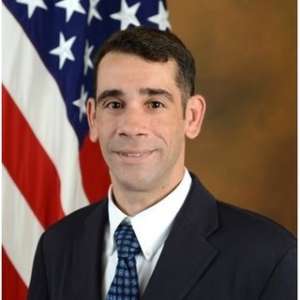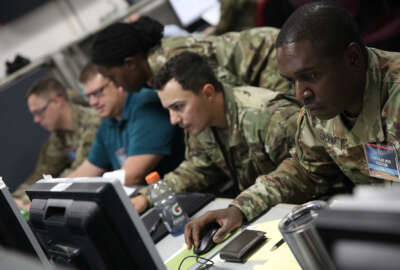Garciga tapped to become new Army CIO
Leonel Garciga, who has worked as the director of information management for the Army G2 since 2019, will replace Raj Iyer as the service’s lead technology...
The Army picks a familiar face to lead its next phase of its IT modernization effort.
Leonel Garciga, who has worked as the director of information management for the Army G2 since 2019, will replace Raj Iyer. Iyer resigned after more than two years in February. He now is head of global public sector for ServiceNow.
Dr. David Markowitz, the Army’s chief data and analytics officer, has been the acting CIO since Feb 10. An Army spokesman said he didn’t know when Garciga would step into his new role.

Garciga has worked for the Defense Department since 1997 when he joined the Navy. After 11 years of service, he became a civilian employee, working at the Defense Intelligence Agency as analyst and IT specialist.
Garciga became the chief technology officer for the newly created Joint Improvised-Threat Defeat Organization, which moved under the Defense Threat Reduction Agency in 2016.
“Garciga will spearhead the Army’s technological transformation efforts, ensuring the effective management and utilization of information systems across the organization,” the Army said in a news release.
Garciga becomes the second civilian CIO after the Army split up the CIO and G6 roles in 2020.
He inherits an Army technology infrastructure that has transformed over the last few years and still has a long ways to go. But the Army CIO holds much more influence over the IT modernization than ever before.
The service has more than 15,000 IT professionals and more than 10,000 service members and spends more than $18 billion on IT and cyber alone.
Garciga will have his opportunity to leave his imprint on the Army’s Digital Transformation Strategy, released in October 2021.
The strategy has three top level objectives, each with a series of efforts — 13 in all — to implement change across the service.
One major focus area will be the service’s move to a zero trust architecture. Dubbed Knights Watch, Iyer called the Army’s plan a much different approach, both culturally and technologically, than previous cyber initiatives.
Another major effort will be to continue to focus on moving applications and workloads to the cloud. To that end, the Army recently issued two requests for information to expand and update its Enterprise Cloud Management Agency efforts. One RFI focused on the reseller sector to procure and manage disparate cloud services. A second RFI asked for feedback on enterprise cloud financial operations (FinOps) services. Responses to both RFIs were due June 16.
“Leo is the right leader to execute the strategy and vision that we established for Army Digital Transformation,” Iyer said in an email to Federal News Network. “He brings deep technical expertise on cloud and data, both top priorities to achieve data centricity. They key to success is now successfully executing the decisions that have been made while staying adaptable to new disruptions from technologies like generative artificial intelligence. I have the greatest confidence that Leo can get the job done with super team of leaders across the Army.”
Paul Puckett, the former head of Army’s ECMA, said Graciga was his inspiration to join DoD as a civilian employee.
“Leo has a unique blend of strategic leadership, technical expertise and tactical maneuvering that’s underpinned by confidence, humility and integrity,” said Puckett, who now is CTO of Clarity. “The Army drive for distributed command and control in support of JADC2 which requires ops/intel fusion leveraging global cloud resources requires a CIO of Leo’s caliber and I couldn’t be more stoked for the future.”
Copyright © 2025 Federal News Network. All rights reserved. This website is not intended for users located within the European Economic Area.
Jason Miller is executive editor of Federal News Network and directs news coverage on the people, policy and programs of the federal government.
Follow @jmillerWFED






